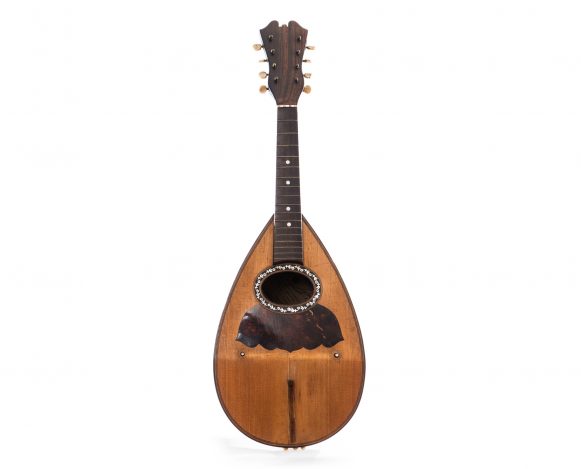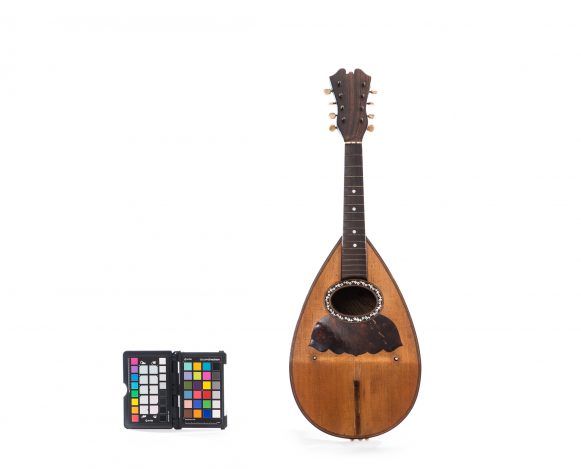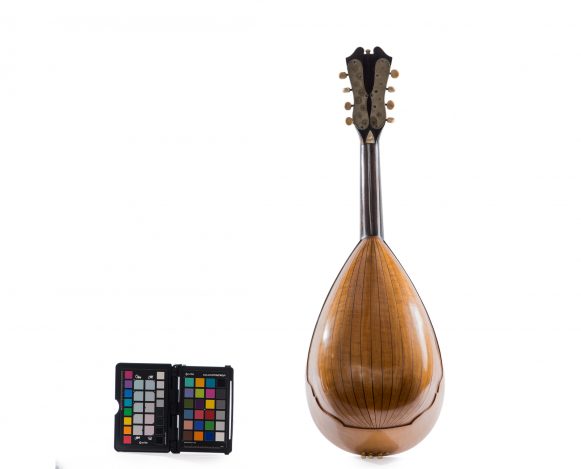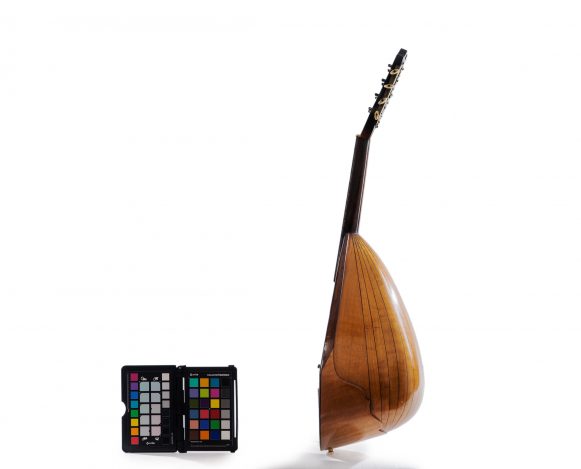Neapolitan style mandolin with convex bottom. There are mother of pearl ornaments and floral motifs around the sound hole. Dark color decoration on the body. It has four string orders tuned in G2-D3-A3 and E4. The instrument is played with the plectrum. The Museum’s specimen does not have a strap, or a bridge.
The mandolin derives from the Italian mandola and the French mandore, equivalent instruments of the 16th Century. These instruments were bigger with six to eight string orders, that is, six to eight pairs of strings, although there were smaller mandolas in Italy and in Germany, with four or five pairs of strings. Italians started to call the mandola a mandolino and the instrument became very popular between the 17th and 18th centuries. In the 19th century, the Monzino luthier family from Milan made various structural modifications in the mandolino, reinforcing the body and making it bigger. In the 19th century, the Vinaccia family continued the changes started by the Monzinos, and built the modern mandolin, or Neapolitan mandolin, with four pairs of strings, deep body, decorated soundboard, tuned like the violin G2-D3-A3-E4, and strings picked by a plectrum. In the 20th Century, the family of modern mandolins of straight bottom continued to be rather popular, used in jazz, bluegrass, and popular Irish music. In Brazil, the instrument is part of ensembles that play the choro, musical genre original from Rio de Janeiro at the beginning of the 19th century and still very popular.
Text written in collaboration with Professor Paulo Sá of the Federal University of Rio de Janeiro (UFRJ).











